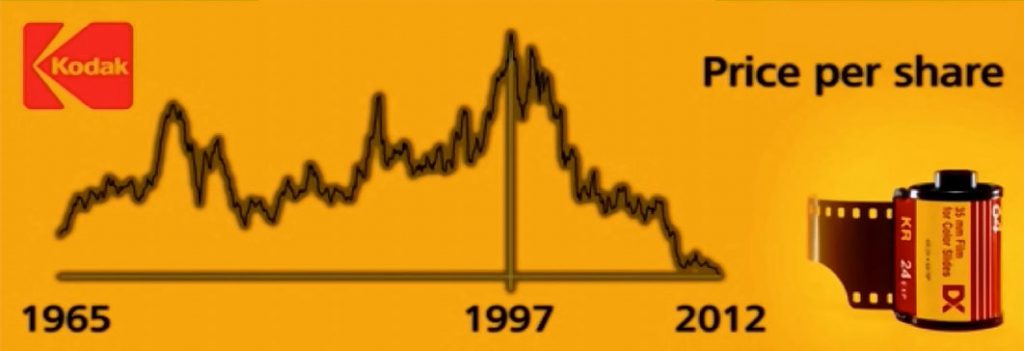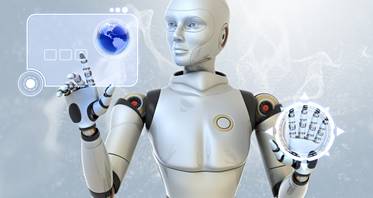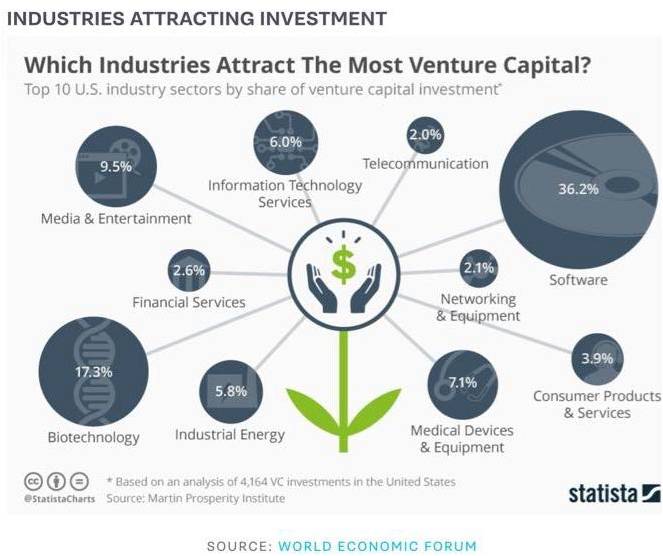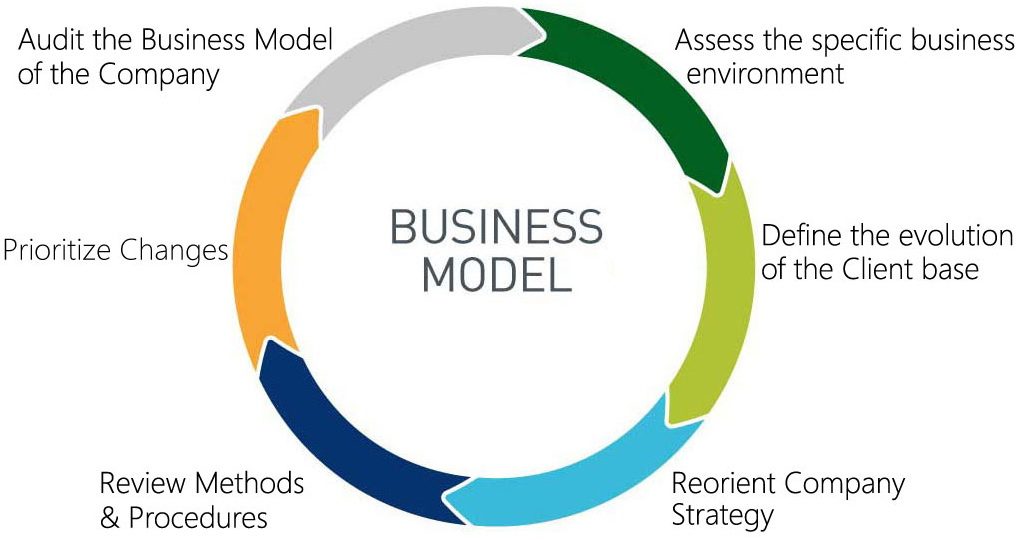Forecasting Company Life Expectancy with the New Technologies
In the next ten years 50% of the existing Companies Worldwide will cease to exist. In some sectors this will be more pronounced, but no sector will remain with its present structure intact. U.S.A. commercial company bankruptcy is up 38% from a year ago.
Nobody would believe in 1998 that in three years, there would be no paper and film photos and Kodak, the iconic name and bluest of the blue chips that dominated photography for the whole of the 20th Century would file for bankruptcy.
The same but on a much bigger scale is happening now. One has only to observe the traditional consumer retail outlets, as they enter the ice age, in what is known in the USA the Great Retail Apocalypse. That is because a new type of consumer is evolving who must be understood in a radically different way, thus the need to redesign marketing activities according to his/her needs. Sears is about to go bankrupt. In a recent conference in Las Vegas USA about retail, the principal conclusion was that there are too many retail shops. Retail shops have not increased. On line shopping and other forms of retail reduced the classic retail shops customers. The list of closing retail shops is staggering.

The graph above proves it.
“It’s an industry that’s still in search for answers”, said Noel Hebert, an analyst at Bloomberg Intelligence. “I don’t know how many malls can reinvent themselves”.
Retailers have to go to the new technologies and change their Business Model or go extinct.
The graph below is characteristic

Unfortunately, even the companies that will use some or all of the above technologies have no guarantee that they will succeed. Their chances of success are of course far superior from the rest. Nevertheless deep thinking and innovative strategies are required in the new, totally different Consumer Business environment.
The digital revolution era affects all Business Models
This article in not only about consumers…
Notwithstanding their emblematic names, Toshiba Corp’s U.S nuclear unit, Westinghouse, filed for Chapter 11 bankruptcy protection. There is a paradigm shift in Business Models across the board, from Energy to Manufacturing which is getting smart. Companies are increasingly using sensors and wireless technologies to capture data at all stages of a product’s life.
From Finance to Retail Banking, to what BBVA calls exponential Banking. BBVA is closing 262 branches in Spain this year because of digitisation. Artificial intelligence (AI) will become the primary way banks interact with their customers within the next three years, according to three quarters of bankers surveyed by consultancy Accenture (ACN.N) in a new report. Dubai banking is already advanced in digitisation.
The organizations must also have the ability to re-think HR systems, tools and methods using appropriate technology. Technology has touched every facet of HR’s traditional roles; social media platforms have quickly increased the speed and focus of recruitment, and video-conferencing has transformed the interview process. Advanced software offers improved big data analytics. Generational differences in the workplace have also added a new layer of complexity. HR leaders need to adapt HR processes in a way that effectively supports the implementation of the organization’s strategy. Many businesses have been recognized for their innovative approaches to transforming HR functions both with, and sometimes without, technology…and all these in a shifting and changing international geopolitical environment.
In this article we examine the drivers of this paradigm shift and the ways and means that a Company needs to survive and flourish in the next years.
The principal drivers are of course Digitisation, Artificial Intelligence and Robotics, but it is not by adapting to them piecemeal and incrementally that the future of a Company is assured. Simple digitisation is not enough. Otherwise the problem is just digitised. The transformation starts with a Business Model audit and if necessary, redefinition, as a prerequisite for survival and growth. This also entails rethinking back and front-end operations, which may involve digitising part or all of the processes.
Focusing at the Business Model
It is better to approach the issue by examining the causes of Companies deaths, beyond natural wastage, as understanding them will not only show the way forward, but also what must be avoided, to ensure survival. This needs to be followed up with new Strategy creation, original Tactics to match and the development of a new methodology to materialize it; the whole to be seamlessly linked.
The first thing to understand is the need for a new Business Model.
The scheme below shows the evolution of the top 5 publicly traded Companies between 2006-2016.

In ten years, the giant Exxon, has been out of the top five. In fact all companies of 2006 are out with the exception of Microsoft because in five years from 2011 to 2016 only digitally relevant Companies are ahead.
The hydrocarbon based Energy Companies are not leading anymore. This is not surprising as the cost per watt of residential solar panels is now less than $2.5 per watt vs. $4.73 five years ago.
The culprit is not the lack of digitisation, it is rather the Business Model choice, which based in fossil fuels rendered them outdated. The winners are the renewable energy based business models that are adopted by emerging companies. Even the traditional Energy Companies realising the issue are now changing their business models, giving priority to renewable energy investments.
The driver is the development, management and commercialization of new knowledge in a systemic way, to achieve and exploit a suitable new business model. This does not need necessarily new technologies because changes in Strategy, Tactics or Methods can also achieve a better Business Model, but the new technologies can help a lot.
KODAK PARADIGM
Kodak did not fail from lack of talent, its failure was systemic. As an organization it could not understand that paper photography was dead and that by developing automatic film developing machines, with a half hour development time, it would be once more ahead of the curve. It was not.

Kodak lagged behind in adopting digital photography, digital storage and electronic photo frames not because they did not have in house talent but because they could not disentangle themselves from the paper Business Model.
It is easy now with hindsight to criticize Kodak.
Let’s turn our attention now to observe the present and near future.
AMAZON PARADIGM

For a few years now, Amazon is selling more digital books than hard copies and the number is surging year on year.
This should make Publishers, Printers and Paper Makers to rethink their source of Business.
TRUCK TRANSPORTATION BUSINESS PARADIGM
Those in the truck transportation business must consider, that in three years, trucks will be automated without driver, most probably in a hybrid gas-electric form and will form train-lines, traveling together, to minimize energy consumption using all of the above. The time to decide what to do with the present fleet of trucks and subcontractors is now.

Dubai is already preparing for driverless taxis and public transport cars.
Tremendous changes are taking place in every field.
ENERGY PRODUCTION CHANGE PARADIGM
Energy production is being transformed. Countries have started to produce more electricity than they need from Renewable Sources. Solar and hydro combinations are increasingly taking market share. The evolution of the battery to a cheaper form with bigger capacity has already started. How does this affect the fossil fuel business? There must be a change in the Business Model.

Toyota bought the share majority of Westinghouse Electric in 2006 for $5.6 billion dollars. Ten years later the Company is bankrupt and Toyota will write off $6.3 billion. This is mostly due to technology changes. It will create a “chain reaction” in nuclear station building contract cancellations. To write off the loss, Toshiba Corp shareholders agreed to
split off its prized NAND flash memory unit, paving the way for a sale to raise at least $9 billion to cover U.S. nuclear unit charges that threaten the conglomerate’s future. So they sold the future to finance the past…. Toyota is about to go bankrupt for betting on the losing side of Energy production.
TECHNOLOGY EVOLUTION PARADIGMS
In most European countries, new land diesel oil engines will be illegal by 2025. What is the point in continuing Diesel engine research? It is becoming as obsolete as research in reciprocating steam engines.

Even Wi-Fi providers are under threat since mobile phones companies offer unlimited data packages for their phone customers.
FINANCIAL TECHNOLOGY PARADIGM
HSBC Holdings Plc (HSBC), announced a strategic partnership with financial technology company Tradeshift, that will allow the bank’s clients to manage their supply chains and working capital requirements digitally. HSBC said it invested an undisclosed sum last June in Tradeshift, which connects 1.5 million companies over 190 countries.
in Tradeshift, which connects 1.5 million companies over 190 countries.
The deal which is the latest in increasingly common partnerships between traditional banks and financial technology firms, will allow HSBC customers to automate the paper-heavy process of ordering and invoicing along supply chains.
Companies that succeed are those that put creativity before productivity and use all modern tools to understand, attract and increase their market.
Finance is completely changing.
ARTIFICIAL INTELLIGENCE PARADIGM

Trading platforms using AI algorithms are performing better than traders. It takes more time now to digitally transfer money from New York to London, because of procedures, than actually physically transport it by air. Blockchain technology is going to change that. Most Bankers have not even heard this word. Blockchain now is entering the heavily regulated area of power production and distribution making possible a functioning buys & sell grid from utilities to companies to households and vice versa. It is also entering the area of Trade Finance.
Even applications that use AI in law interpretation and case presentation already are statistically more accurate than humans. This is not about abolishing lawyers, but reforming them in their thinking, with the use of these and other digital tools at their disposal.
A POSITIVE PARADIGM
Not all news are negative. The Aadhaar Act is a magnificent example of the new technologies potential
India, pre-2009, had a massive problem for a developing economy: nearly half of its people  did not have any form of identification.
did not have any form of identification.
Aadhaar became the largest and most successful IT project ever undertaken in the world and, as of 2016, 1.1 billion people (95% of the population) now has a digital proof of identity. To understand the scale of what India has achieved with Aadhaar you have to understand that India accounts for 17.2% of the entire world’s population!
The 12 number digital proof of identity allowed people to open Bank accounts and obtain mobile phone numbers among other benefits. Within three years more than 270 million bank accounts were opened and $10bn in deposits flooded in.
So there are huge areas that Companies and people can greatly benefit from the new technologies.
The road to the near future & Areas of investment
Naturally two questions emerge:
1. -The first is where the new technologies lead us?
2. -The second is where it will be profitable to invest?
The answer to the first question is that, technologies are leading us to a new world. An excellent example of this is the Internet of Things (IoT). By definition (IoT) is a system of interrelated computing devices, mechanical and digital machines, objects, animals or people that are provided with unique identifiers and the ability to transfer data over a network without requiring human-to-human or human-to-computer interaction.
Where it is leading us is best shown by the following graph:
The graph shows best that we have already available this technology for logistics, supply chain helpers and vertical market applications by locating people and everyday objects.
The next giant step that is now entering the “arena” is tele-operation and tele-presence. It means that an inhabitant of Thailand can operate machinery in Argentina, or that a manager installed in Dubai can manage a concern in the USA.
The second question, where is more profitable for a company to invest is answered by the following schematic:
It shows that more than 50% of new business Investment is directly digital related.
So where does the problem lie?
The core of the problem lies in two things:
- -Senior executives of companies are mostly bottom liners.
- -Procedures in any company are by definition obsolete.
In our age, that profits are squeezed and companies struggle to survive, it is rather difficult for senior executives to zoom out from monitoring and managing budget execution, cash flow evolution and increased “fire fighting” vs. thinking about the future of their company in a 3-5 year horizon.
The quest for profits is the driving factor and it is usual, for instance, in the Banking business to have a horizon limited to the present and next trimester. We tend to forget the famous Drucker dictum:
“You are in Business because you have customers to serve. Profit is only the measure of how well you do it”.
If a company does not feel the winds of change, inadvertently it will perish.
The second problem is procedures. Procedures use the experience of the past to rule how present business is to be conducted. By definition procedures are obsolete. No company can exist without rules and/or procedures. The same though, creates company inertia, which is resisting change. It is not a question of people. After all, all those magnificent new ways of knowledge creation and management, are created and developed by people.
There is though a systemic hysteresis of all Companies and Organizations to modernization i.e. change of Business Model, particularly when it is as revolutionary a time as now.
The responsibility of changing Business Model, including procedures, by digitisation, automation or any other way to make them continuously up to date and flexible belongs to the company at the highest level, not to its employees.
The answer is not found in technology only. The Soviet Union collapsed not because it was lacking in technology, after all it was the first country that put man in orbit into space. They had also the tools to achieve reasonable productivity.
The Soviet Union failed because it was unable to recognize and satisfy the needs of its citizens. It was not a problem of production but one of distribution according to needs.
To avoid a Company going the way of the Soviet Union, its top management needs a holistic approach; and as such it has two solutions which can also be complimentary:
- The first is to create an internal team of powerful executives with no direct vested interests, allowing them to examine the present and near future Business Model environment. The subsequent developed Strategy may require painful reforms which in turn may also lead to executive psychological fallout and weak, company-wide, acceptance.
- The other is to call an external, multifaceted and advanced team of experts, for help. External help has the doctor’s advantage. It does not need to empathize with the patient but only to make the correct diagnosis and subsequent remedies. It will perhaps be equally painful but it will be perceived as more impartial and objective; hence easier to accept and implement.
A non financial business audit i.e. a cold appraisal of the Business Model, present and foreseeable future, with which the Company operates, are the first actions. Blunt but sophisticated discussions and recommendations are to follow with the top leadership of the Company.
Copying others is not enough. Drone pizza delivery, may be great in Los Angeles but may not be applicable in New York. Creating a new machine to instantly produce a hot pizza from a big choice of pizzas, something like Nespresso did with instant good quality coffee and the machine that goes with it, may be a better idea.

The modern Company, to succeed, needs to combine and integrate different knowledge and innovation modes in a co-evolutionary and co-specialized way. It needs to understand the evolution of its operating environment in the context of fast paced societal, technological and economic parameters. It needs to augment the collective human mind which would be the ultimate superpower for the company.
A brave mind-shift at the higher echelons of a business is required to review its operations and disentangle itself from its past successes in order to reinvent its future. Achieving the desired level of Business Model fitness is a prerequisite for survival and growth. The Business Model should be designed in such a way to allow meeting present demands, as well as, realising new opportunities and ensuring its competitive future. It all begins with a thorough Business Model audit, aiming to assess its fitness.
Developing a new Strategy, although strongly based and supported on the external and/or internal team findings and recommendations, can only be decided by the top of the Company, because there is no substitute for Leadership and the core virtue of Leadership is innovation through vision. Then it can be successfully defined, communicated, implemented and monitored within a reasonable but tight time frame.
After all it is the patient’s decision to take the recommended medicine or/and undergo the operation.

